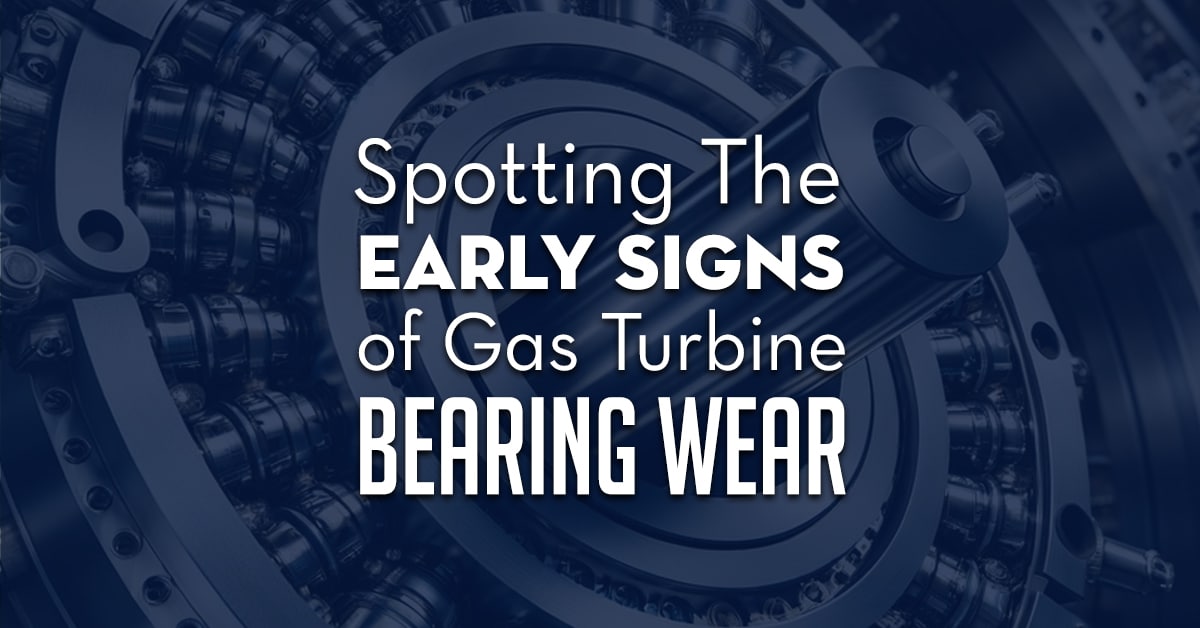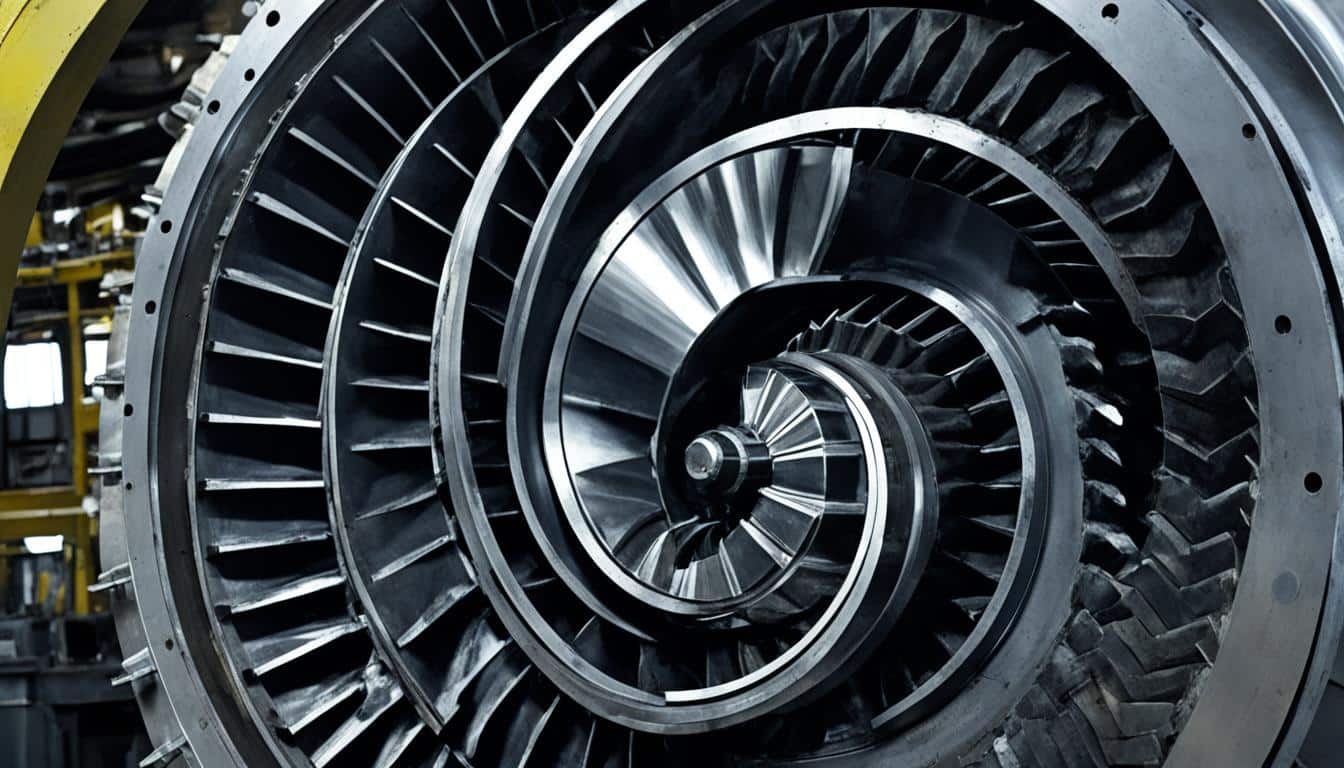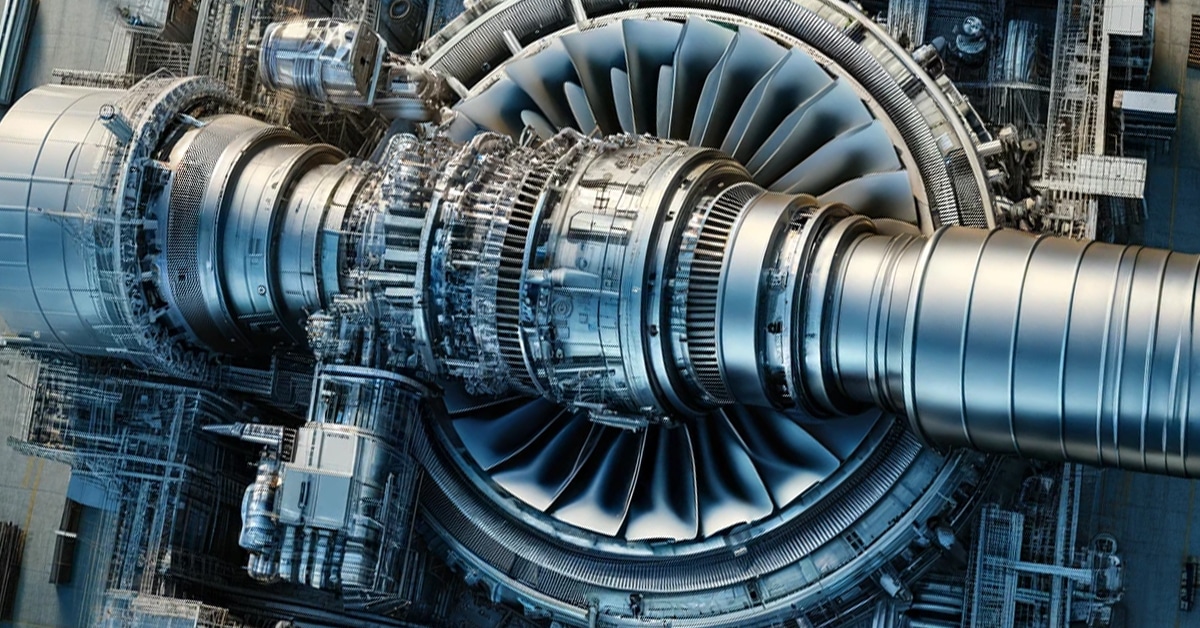For professionals in the power generation sector, recognizing the signs of gas turbine bearing wear is critical for maintenance and the prevention of operational disruptions. A turbine’s bearing wear can silently progress, but with vigilant monitoring and expertise, its symptoms and indicators can be uncovered in time. Technicians are empowered to diagnose gas turbine bearing wear and implement necessary interventions when they are adept in identifying the early signs of gas turbine bearing wear and understanding how to detect gas turbine bearing wear. This proactive approach in diagnosing and responding to turbine bearing issues not only enhances reliability but also extends the lifespan of valuable turbine components.
Amid our discussion, let’s keep a keen eye out for vibrational anomalies, check for changes in operational temperatures or pressures, and diligently analyze lubricant quality for contaminants. These are among the core strategies that lead us to detect bearing wear, ensuring that our gas turbines continue to operate at peak efficiency with minimal downtime.

Key Takeaways
- Vibration analysis is crucial for pinpointing early and progressing bearing wear.
- Monitoring operational parameters such as temperature and pressure offers clues to turbine health.
- Examining lubricating oils for contaminants serves as an internal check for component integrity.
- Comparisons with original turbine specifications help identify reductions in performance and efficiency.
- Predictive maintenance tools are instrumental for preemptive wear detection and maintenance scheduling.
- Ongoing education and consultation with turbine experts contribute to a nuanced understanding of bearing wear challenges.
Understanding Gas Turbine Bearing Wear and Its Impact on Operations
Grasping the intricacies of bearing wear analysis in gas turbines is a critical aspect of maintaining operational integrity and machinery longevity. The bearings within a gas turbine are crucial; they support the moving parts, reduce friction, and maintain stability. A fundamental part of preserving these machines lies in both identifying the common causes of gas turbine bearing wear and understanding their consequences on operation and efficiency.
To mitigate the risk of bearing degradation, engineers and technicians must regularly inspect the turbines and conduct sophisticated analyses. They must observe and comprehend the specifics behind predicting gas turbine bearing wear, pinpoint its root cause, and implement appropriate measures. The analysis often encompasses the collection of vibration data, which is an essential parameter in bearing damage detection.
Regular inspections and performance comparisons with the turbine’s original specifications are essential in identifying bearing wear. Accurate diagnosis aids the implementation of effective contingency strategies.
- Misalignment
- Insufficient lubrication
- Contamination
- Abrasive particles
- Operational overloads
Each of these factors can initiate a cascade of bearing damage culminating in reduced operational efficiency or in severe cases, complete failure. Bearing wear analysis is therefore not merely about problem detection but extends to implementing proactive measures to arrest or reverse the wear process.
Ultimately, understanding turbine bearing condition is indispensable for the uninterrupted and economical performance of gas turbines. Careful scrutiny and accurate analysis lay the foundations for operational excellence and strategic maintenance planning.
Diagnosing Gas Turbine Bearing Wear: Key Indicators and Symptoms
Monitoring the health of gas turbine bearings is pivotal for maintaining the operational efficiency and longevity of power plants. Diagnosing gas turbine bearing wear is a comprehensive process that demands expertise in identifying various wear indicators. A core symptom to watch for is vibration. Excessive vibration signals bearing issues, with vibration analysis providing quantitative measures of such anomalies. This analysis can pinpoint discrepant vibration frequencies that may indicate shaft and bearing misalignment or wear.

Another significant aspect is the monitoring of lubricants for contaminants. Through advanced techniques such as Membrane Patch Colorimetry, maintenance teams can detect the infiltration of harmful particles and gauge the severity of any bearing surface compromise. Machinery inspection processes often integrate these oil and fluid analyses, providing a comprehensive overview of the gas turbine’s condition.
- Excessive vibration indicating misalignment
- Temperature and pressure changes signaling lubrication issues
- Visual signs of corrosion or abnormal wear indicators
- Changes in fuel consumption rates hinting at efficiency losses
Overlooking the critical steps of clearance checking and contamination inspection can result in reduced component life and increased operational costs, such as increased fuel consumption. This is why routine gas turbine bearing wear monitoring is crucial for preempting costly downtime and ensuring optimal performance of energy generation assets.
Beyond hearing for abnormal operational sounds or detecting leakage, technicians utilize precision instruments to measure clearances and analyze bearing surfaces. Corrosion or abnormal particle presence can quickly erode these surfaces, making clearance a crucial metric for gas turbine efficiency and safety.
Ultimately, by understanding these symptoms and indicators – excessive vibration, unwarranted temperature and pressure fluctuations, and abnormal clearance levels – operators can take timely, corrective action, ensuring the reliable function of these critical power-generating components.
Advancements in Gas Turbine Bearing Wear Monitoring and Troubleshooting Techniques
As the energy sector continues to evolve, so do the techniques designed to optimize turbine performance and longevity. Innovations in proactive maintenance and predictive maintenance strategies have significantly improved the ability to forecast and mitigate gas turbine bearing wear before it leads to substantial operational disruptions.
Proactive Strategies for Predicting and Addressing Bearing Wear
The latest approach in predictive maintenance hinges on the real-time analysis of critical components. Custom sensors integrated in turbine lubricant systems and journal bearing assemblies provide continuous data, alerting technicians to the subtlest changes in oil film thickness and coupling behavior that could signify potential issues.
Employing Vibration Analysis and Other Predictive Maintenance Tools
Vibration analysis remains a cornerstone in monitoring advancements. Advanced software tools now interpret data with greater accuracy, pinpointing the onset of wear in turbine blades and generator components. By leveraging this technique, facilities can reduce the time spent on troubleshooting techniques and preemptively apply maintenance resources to areas showing signs of abnormal vibration.
Additionally, wear prediction models have become more sophisticated. Factoring in historical data and real-time feedback from sensors, these models can anticipate when a gearbox or seal may fail, advising timely corrective actions that maintain power output and efficiency.
Importance of Oil and Fluid Analysis in Bearing Wear Detection
Diligent analysis of turbine lubricants can reveal a wealth of information regarding bearing design integrity and performance. Through stringent testing for viscosity breakdown, acidity, and the presence of wear particles, operators can gauge the health of exhaust gas systems and other critical turbine elements long before physical signs of wear become evident.
| Monitoring Technique | Parameter Assessed | Benefit to Proactive Maintenance |
|---|---|---|
| Vibration Analysis | Deviations in Vibration Patterns | Early detection of misalignments and imbalance |
| Sensor Diagnostics | Oil Film Thickness and Coupling Dynamics | Continuous data for real-time adjustments |
| Lubricant Analysis | Viscosity, Acidity, Oxidation Levels | Insight into internal wear and contaminant levels |

Conclusion
The essence of maintaining high-performance gas turbines lies in the unwavering commitment to the health of turbine bearings. This article’s final thoughts on gas turbine bearing wear emphasize the importance of regular inspection and the adoption of forward-thinking turbine maintenance strategies. In an industry where efficacy is measured by uptime, reducing downtime is not just desired; it is imperative. Fortunately, the integration of comprehensive monitoring systems along with predictive diagnostic methods underscores the potential for achieving significant turbine bearing longevity.
With the ever-maturing scope of analytical tools like vibration and oil analysis, the ability to discern early signals of wear has vastly improved. These methodologies serve as core components in the implementation of preventive measures for turbine bearings, thus affording plant operators the upper hand in preempting mechanical wear and tear. By placing a premium on consistent inspection routines and predictive maintenance, those responsible for turbine management solidify the groundwork for minimizing operational disruptions.
Ultimately, the interplay between due diligence and technological advancement forms the cornerstone of effective turbine upkeep. As plants strive to enhance their operational capabilities, they must stay abreast of the latest innovations in wear detection and maintenance tactics. The principle is clear: proactive care and maintenance are not merely beneficial—they are critical in propelling turbine operations toward a future marked by heightened efficiency, sustainability, and overall success.
FAQ
What are some signs of gas turbine bearing wear?
Signs of gas turbine bearing wear include excessive vibration, unusual noises during operation, increased fuel consumption, higher operational temperatures, and the presence of metal particles or discoloration in lubricating oils.
How does bearing wear impact gas turbine operations?
Bearing wear can lead to increased friction and vibration, reduced operational efficiency, and in severe cases, catastrophic machinery failure that can result in costly downtimes and repairs.
What are some common causes of gas turbine bearing wear?
Common causes include misalignment, insufficient or contamination of lubrication, entry of abrasive particles into the system, operational overloads, and thermal or mechanical stresses during the machine’s operation.
How can technicians detect gas turbine bearing wear?
Technicians can detect bearing wear through vibration analysis, monitoring changes in operational parameters, performing oil and fluid analyses for contaminants, and inspecting bearings for physical signs of damage or degradation.
What role does predictive maintenance play in diagnosing bearing wear in gas turbines?
Predictive maintenance, including regular vibration analysis and monitoring of lubricants, allows for the early detection of anomalies in bearing behavior, which can prevent more significant problems from developing and mitigate unplanned outages.
How does oil and fluid analysis help in detecting gas turbine bearing wear?
Analyzing oil and fluid can reveal the presence of metal particles, changes in viscosity or acidity, and signs of oil degradation, all of which can indicate bearing wear or impending failure.
What advancements have been made in monitoring and troubleshooting gas turbine bearing wear?
Technological advancements include the development of sophisticated sensors for real-time monitoring, improvements in oil film analysis, and more accurate vibration analysis tools, all combined, provide better predictive capabilities and facilitate early intervention.
What should be considered when designing a gas turbine bearing monitoring program?
Considerations for a monitoring program should include the selection of appropriate sensors, the establishment of a vibration and oil analysis schedule, understanding the turbine’s operating context, and taking into account specific design factors that may influence bearing wear rates.